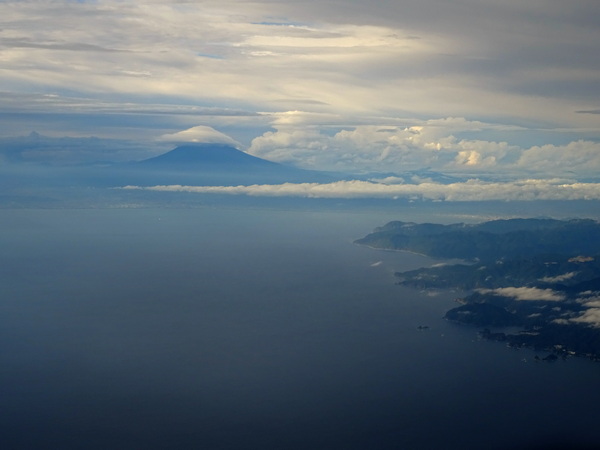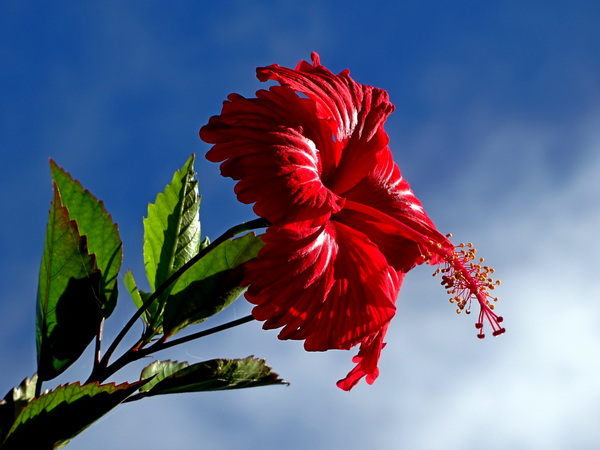
We Hearty Hikers had planned in a couple of spare days, thinking it was likely our two-day hike might be postponed by heavy rain . . . but the weather was great and we finished the hiking up Mt. Miyanoura and through the ancient cedar forest with no problems and were left with a couple of days with no plans in particular.
Yoyu. That’s what it’s called in Japanese. A bit of time when you don’t have to rush. A bit of time when you have time to enjoy the time. If you need to explore something, you’ve got more than enough time to do so. If you need to think about something, you’ve got plenty of time for that, too.
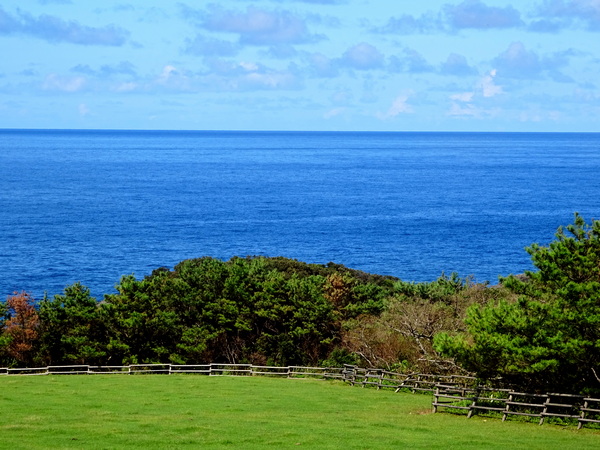
The southern coastline of Yakushima.
I feel a little guilty showing all these beautiful ocean views. We were certainly lucky to have a chance to travel to Yakushima—and to be blessed with incredibly fine weather—but really all I want to say, at the moment, is that the world is very, very beautiful, and I hope a bit of photography can inspire all of us to consider the importance of yoyu in fully appreciating that beauty. I can’t speak for you, but the beauty does wonders for me.
If you’re in this part of the world, a trip to Yakushima is highly recommended. If you’ve got to book flights ahead of time, then you should just resign yourself to the fact that typhoons and heavy rain may dash your plans—that’s what happened to us last October.
Be patient. Get there. Sometime or another. It’s worth it.
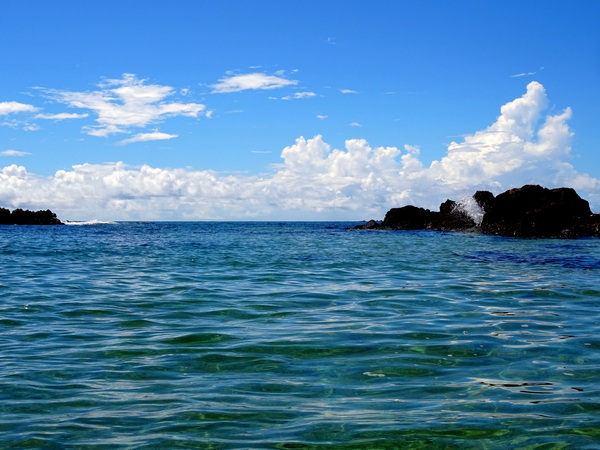
Snorklers wading into the Kurio River, where it runs into the Pacific Ocean. Or maybe the East China Sea. Hard to say at that particular point, just looking at a map.
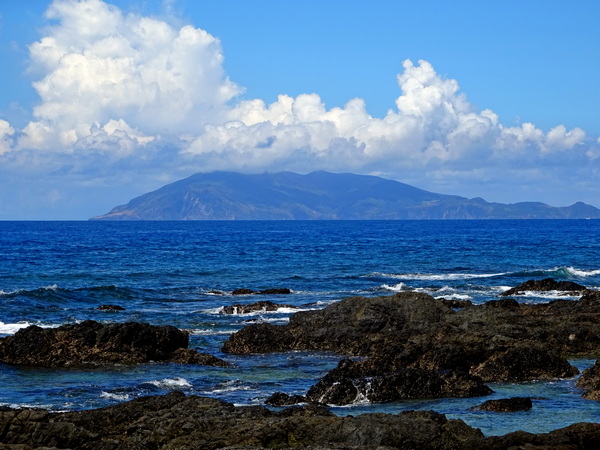
A view of Kuchinoerabu Island from the rocks at the mouth of the Kurio River, on the southwest corner of Yakushima.
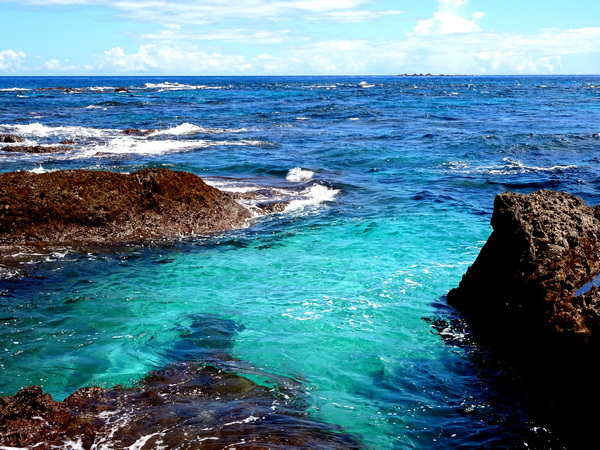
The rocks at the mouth of the Kurio River create a maze-like series of channels. Great for snorkeling expeditions. Lots of colorful fish. Sorry, sorry, no underwater camera.
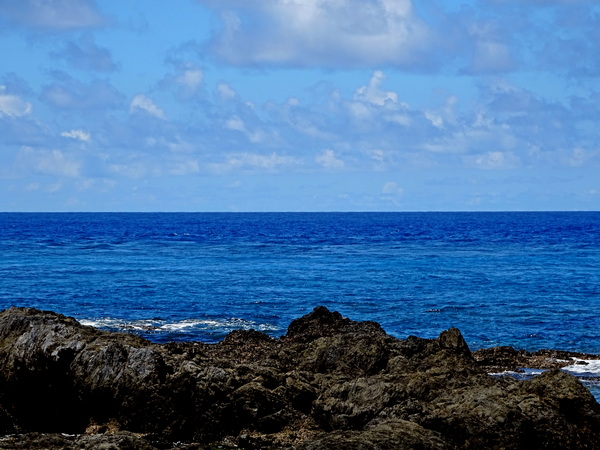
From the Kurio rocks.
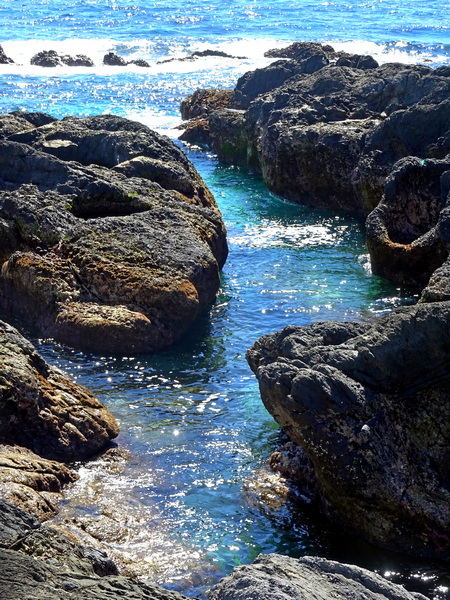
Snorkeling channels.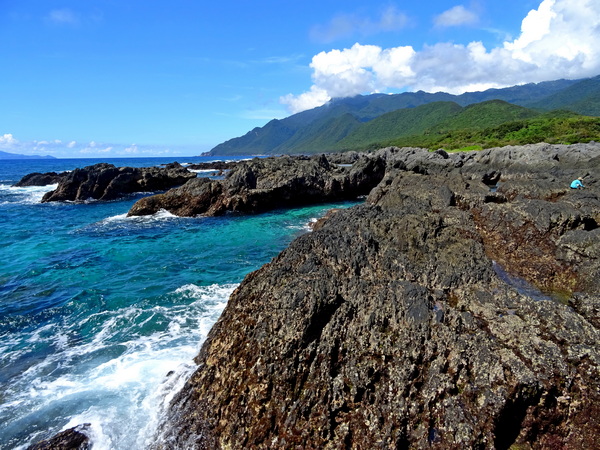
The Kurio rocks. And the mountains. You’re never far from either on Yakushima, about 505 square kilometers in area. You can drive around the entire island in about 2.5 hours. If you don’t stop. Of course, you will stop. Many, many times.
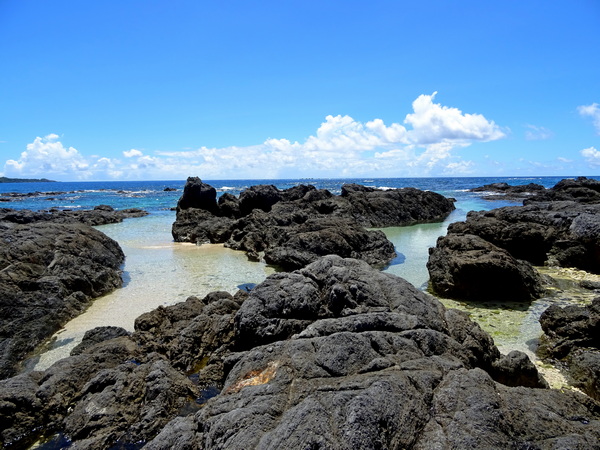 The Kurio tide pools. Lots of little metallic blue fish here. Starfish, too. A good place for small children to explore (with parents nearby).
The Kurio tide pools. Lots of little metallic blue fish here. Starfish, too. A good place for small children to explore (with parents nearby).
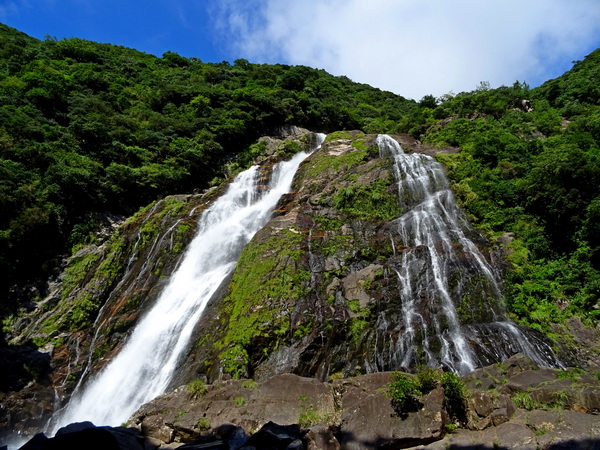
Not far from Kurio, the Okonotaki Waterfall. 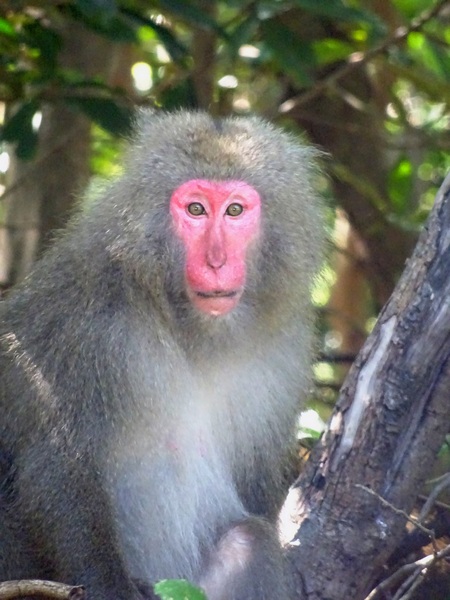 When you drive around the island, your average speed is about 40-50 kph (25-30 mph?). There is not a whole lot of development. Drive long enough and you’re bound to meet deer and monkeys.
When you drive around the island, your average speed is about 40-50 kph (25-30 mph?). There is not a whole lot of development. Drive long enough and you’re bound to meet deer and monkeys.
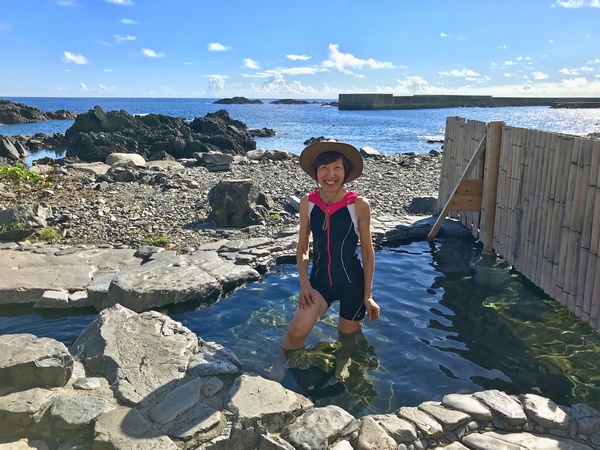
On the southern coastline, the Yudomari Hot Springs. Soothing water. It’s more or less free, but there’s a box to donate 100 yen for upkeep. Guys on the other side of the fence. Heard some debate about whether bathing suits were allowed or not.
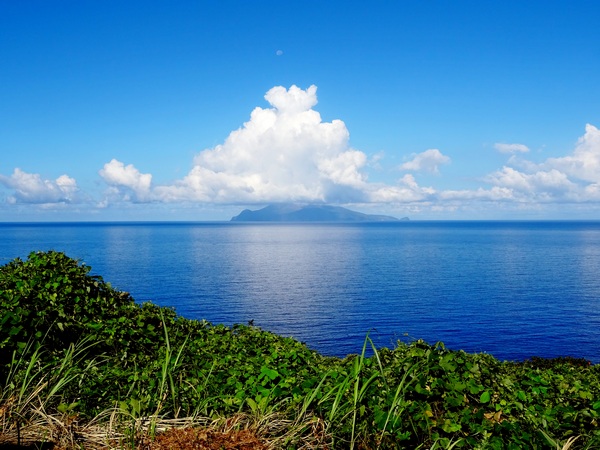 Kuchinoerabu Island from the northern coastline.
Kuchinoerabu Island from the northern coastline.
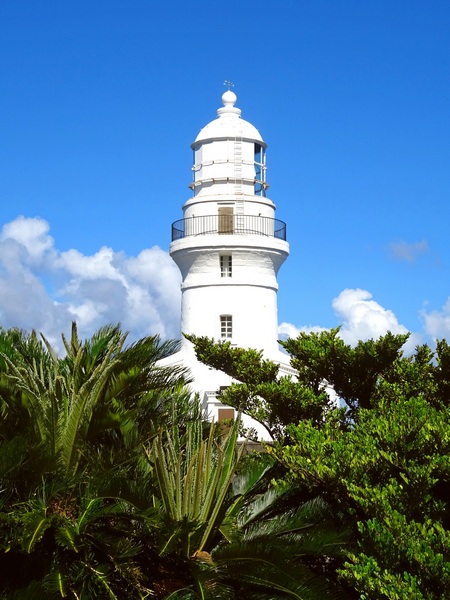
The lighthouse at the western-most point of the island.
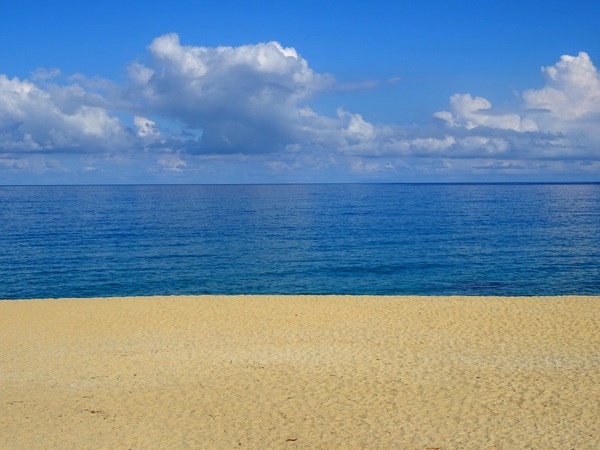
Between the lighthouse and Miyanoura Port, on the northern coast, Inaka Beach. A famous spot for sea turtles laying eggs.
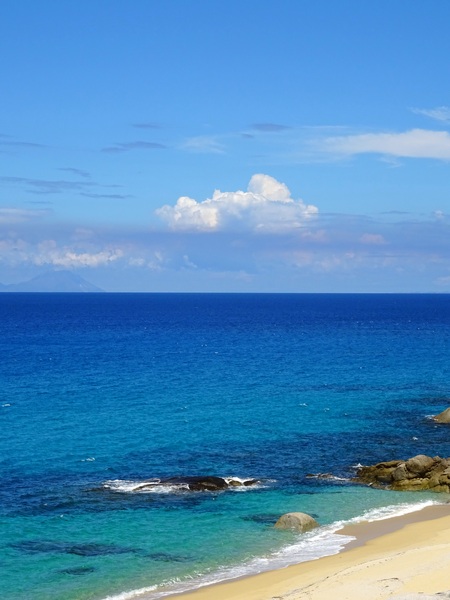 Here, I recommend a little yoyu.
Here, I recommend a little yoyu.
Near the end of the 18th century, the Prussian naturalist/explorer, Alexander von Humboldt invented a device, a cyanometer, to measure the degree of blue in the blue. If you don’t have a cyanometer, though, you’re not necessarily at a disadvantage. Just look at the smile on the face of your fellow Hearty Hikers.
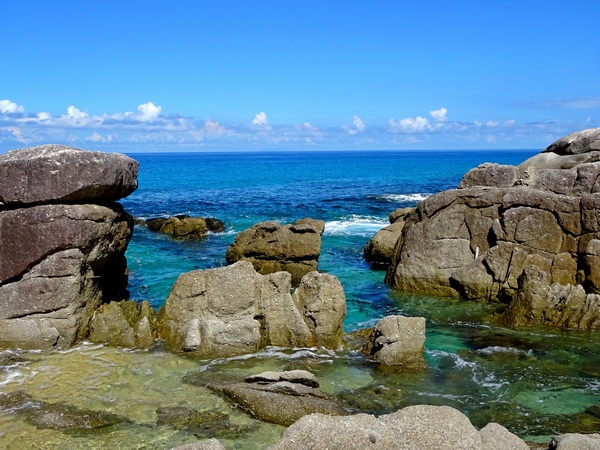
Rocks at the edge of Inaka Beach. Good snorkeling. Apparently tourists are not recommended to snorkel here so much—there are other, calmer spots. I thought it was plenty safe, and just a couple of meters beyond the rocks it’s three or four meters deep with perfect visibility—lots of fish big and small. Maybe the best visibility of three spots I tried.
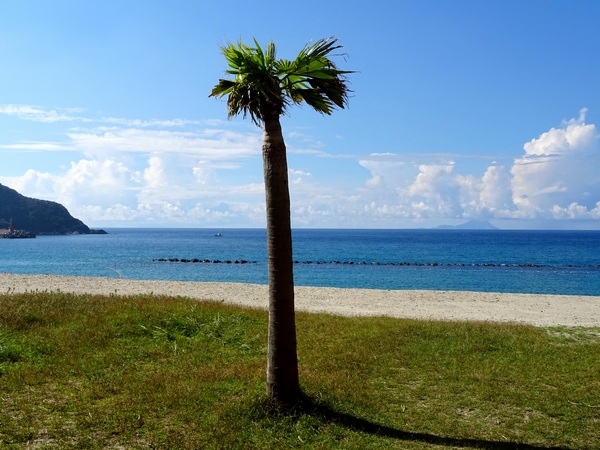
About 30 minutes back east from Inaka Beach, Isso Beach. A lifeguard here so tourists feel comfortable. This is on the left side of Isso Peninsula. If you go to the right side, the coastline is more rocky . . .
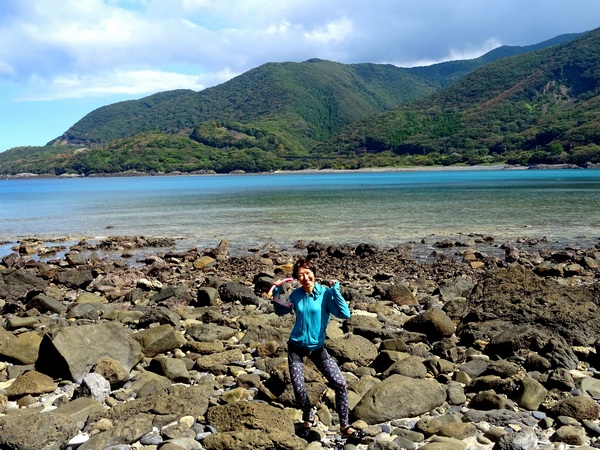
. . . and folks are both scuba diving and snorkeling. Why is the Heart Hiker above so happy? She’s walked straight out into the inlet, 30 meters or so, as far as she could stand up, then floated another 20 meters, perhaps out to a depth of two meters, and communed with a sea turtle. The turtle was munching on some rock greens, so didn’t move for the ten minutes we floated above him. Him, her, I don’t know. Beautiful, beautiful animal. “A goddess of the sea,” the above Hearty Hiker proclaimed.
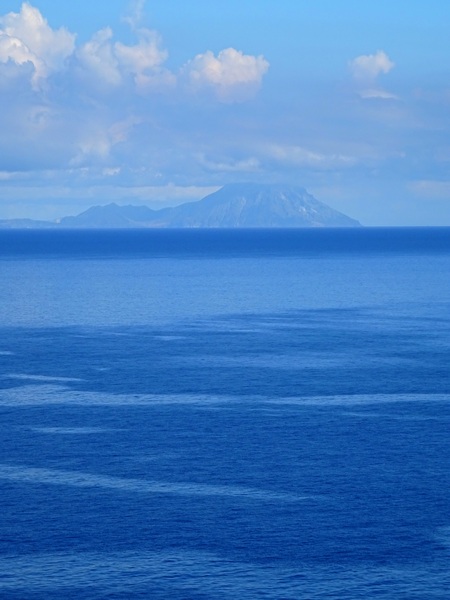
A view of Iwojima. Not the Iwojima of WW2 fame. There are two Iwojimas. Confusing, huh. 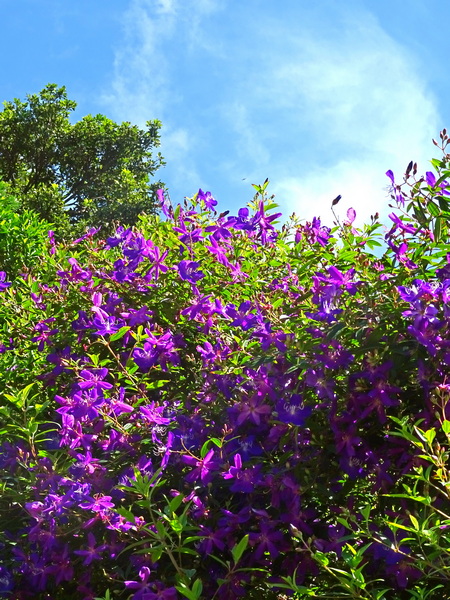 Along the road, yoyu.
Along the road, yoyu.
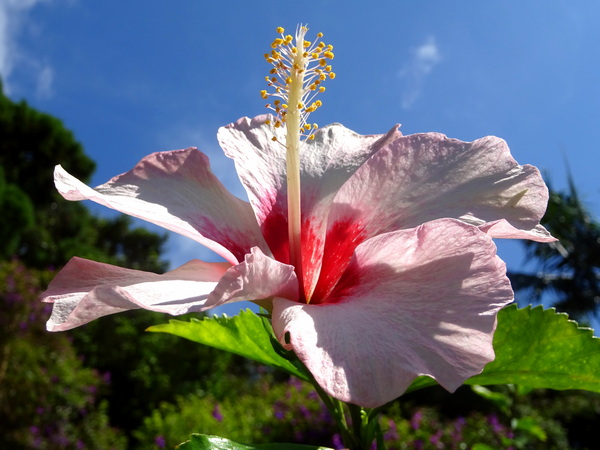
Along the road, yoyu.
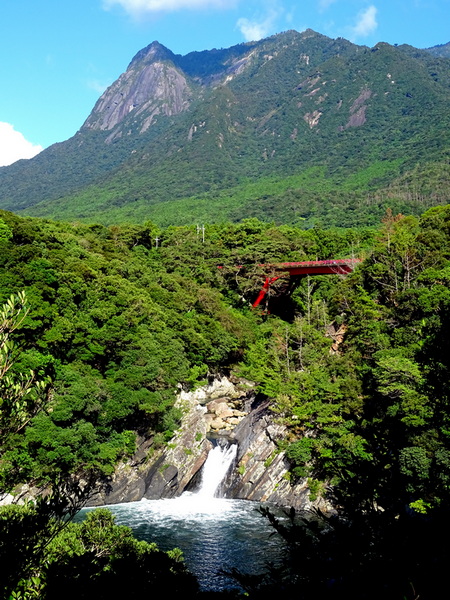
Toroki Falls, on the southern coast, spilling into the ocean.
Flying home.
